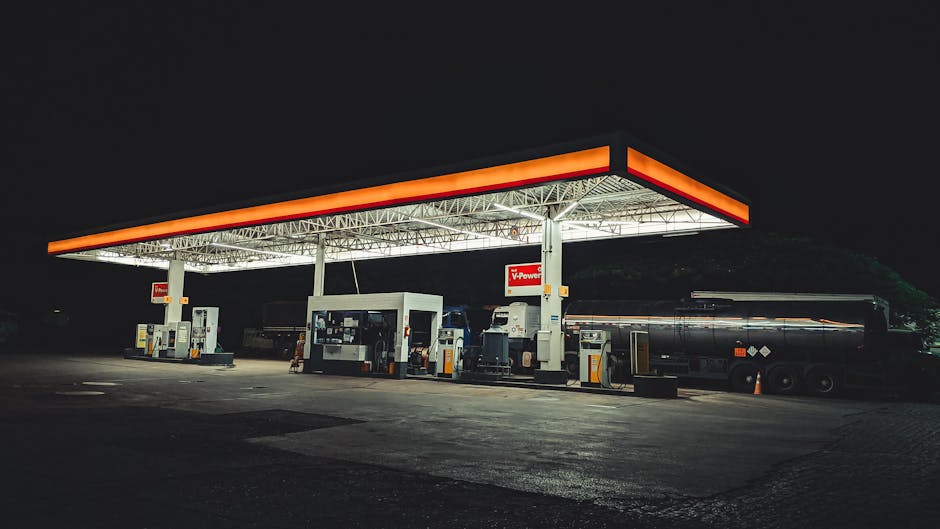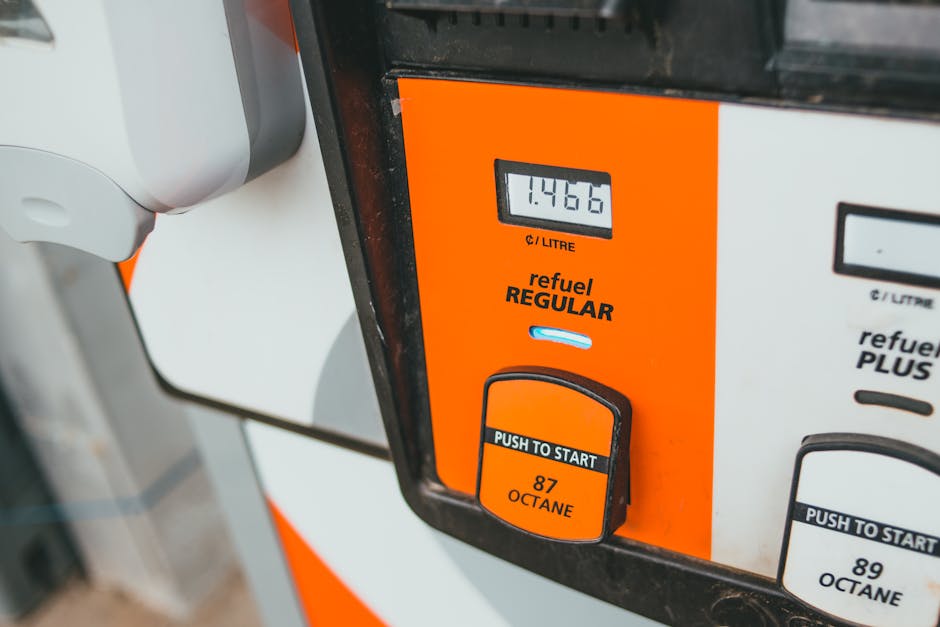The Simple Equation For Calculating Fuel Costs For Your Trip
In a world where our dependance on fossil fuels is ever-increasing, it seems only fitting that we should strive to be as precise and meticulous in calculating the costs associated with our journeys. Enter: the simple equation for calculating fuel costs for your trip.
This seemingly straightforward formula holds the key to unlocking the mysteries of fuel consumption and expense estimation, providing us with an invaluable tool for budgeting and planning. By employing an academic style of writing that is objective, impersonal, and devoid of personal pronouns, this article aims to present readers with a logical and data-driven approach to determining their vehicle's fuel efficiency, estimating the distance of their trip, calculating total fuel consumption, considering fuel prices and variations, and ultimately budgeting for fuel expenses.
So buckle up as we embark on this analytical journey toward fiscal control over our fuel expenditures.
Key Takeaways
- Factors such as type of vehicle, engine size, driving habits, environmental conditions, and maintenance can affect fuel consumption.
- Improving fuel efficiency is important due to rising costs and environmental concerns.
- Accurately estimating the distance of a trip is crucial for informed trip planning.
- Factors to consider when calculating total fuel consumption include vehicle efficiency, distance travelled, and average fuel consumption rate.
Determining Your Vehicle's Fuel Efficiency

The determination of a vehicle's fuel efficiency involves measuring the amount of fuel consumed over a given distance, allowing for an accurate assessment of its ability to convert fuel into propulsion.
Improving fuel efficiency has become increasingly important due to rising fuel costs and environmental concerns. By understanding the factors affecting fuel consumption, individuals can take control of their vehicle's efficiency and make informed decisions to reduce their overall fuel costs.
Several factors influence a vehicle's fuel consumption. First and foremost is the type of vehicle itself. Different types of vehicles, such as sedans, SUVs, or trucks, have varying levels of aerodynamic drag and weight that impact their overall efficiency. Additionally, engine size and power play a significant role in determining how efficiently a vehicle converts fuel into energy for propulsion.
Other factors include driving habits and conditions. Aggressive driving behaviours like rapid acceleration or excessive speeding can significantly decrease fuel efficiency. In contrast, adopting smooth acceleration patterns and maintaining a consistent speed can help improve mileage. Environmental conditions such as temperature, air density, and road surface also affect a vehicle's performance.
Regular maintenance is crucial in optimising fuel efficiency. Properly inflated tyres reduce rolling resistance while clean air filters ensure efficient combustion within the engine.
By considering these factors and making conscious choices to improve fuel efficiency, individuals can effectively manage their expenses related to transportation. Once one understands their vehicle's capabilities in terms of converting fuel into propulsion, estimating the distance of your trip becomes the next logical step towards calculating accurate fuel costs.
Estimating the Distance of Your Trip

To accurately estimate the distance of a journey, one can employ various methods and tools. By determining the distance of a trip, individuals can better plan their travel time and choose the most fuel-efficient route. There are several ways to estimate the distance of a trip, including using online mapping tools, physical maps, or even manual calculations.
One commonly used method is utilising online mapping tools such as Google Maps or MapQuest. These platforms allow users to input their starting point and destination, providing an estimated travel distance. These tools also offer additional features such as real-time traffic updates and alternative routes that may be more fuel efficient.
Physical maps can also be utilised for estimating trip distances. By measuring the length between two points on a map legend using a ruler or compass, individuals can calculate an approximate distance for their journey. While this method may not be as precise as online mapping tools, it still provides a general idea of the expected travel distance.
For those who prefer manual calculations or do not have access to digital resources, there is a simple formula that can be employed: Distance = Speed x Time. By knowing the average speed at which they will be travelling and estimating the duration of their trip in hours, individuals can calculate an approximate distance.
By accurately estimating the distance of their journey through these various methods, travellers can make informed decisions when planning their trips. This includes choosing routes that are both time-efficient and fuel-efficient. Next, we will discuss how to calculate total fuel consumption during a trip without writing 'step'.
Calculating the Total Fuel Consumption

One effective approach to determine the overall fuel consumption during a journey is by considering various factors such as vehicle efficiency, distance travelled, and average fuel consumption rate. By calculating the average consumption, drivers can optimise their fuel efficiency and make informed decisions about their travel plans.
To calculate the total fuel consumption for a trip, follow these steps:
Determine the distance of your trip: Use online mapping tools or GPS devices to accurately estimate the distance you will be travelling. This step is crucial as it forms the basis for further calculations.
Identify your vehicle's average fuel consumption rate: Consult your vehicle's manual or manufacturer specifications to find out its average fuel consumption rate. This information is usually expressed in litres per 100 kilometres or miles per gallon.
Multiply the distance by the average fuel consumption rate: Multiply the distance of your trip by your vehicle's average fuel consumption rate to obtain an estimate of how much fuel will be consumed on that journey.
Calculating the total fuel consumption provides drivers with valuable insights into their travel expenses and helps them plan accordingly. By optimising their vehicle's efficiency through techniques like maintaining proper tyre pressure and avoiding excessive idling, drivers can further reduce their overall fuel costs.
Considering fuel prices and variations is another important aspect when planning a trip. It allows drivers to factor in potential price fluctuations along their route and make adjustments if necessary.
Considering Fuel Prices and Variations

Considering the volatility of fuel prices and potential fluctuations along a journey, drivers can make informed decisions about their travel plans by factoring in variations and adjusting accordingly. Analysing the impact of fuel subsidies on fuel prices is one way to understand the dynamics behind these variations.
Fuel subsidies are government policies that aim to reduce the cost of fuel for consumers. By providing financial incentives to suppliers or implementing price controls, governments can directly influence fuel prices. However, it is important to note that while subsidies may temporarily lower fuel costs, they can also create distortions in the market and lead to inefficiencies.
Another factor that drivers should consider when assessing variations in fuel prices is the correlation between fuel prices and inflation rates. Inflation refers to the overall increase in prices over time and can be influenced by various factors such as changes in demand, supply disruptions, or shifts in government policies. Understanding this correlation allows drivers to anticipate how changes in inflation rates might impact future fuel costs.
By analysing both the impact of fuel subsidies on fuel prices and exploring the correlation between fuel prices and inflation rates, drivers can gain valuable insights into potential variations in their travel expenses. This data-driven approach empowers them with knowledge that enables more effective decision-making regarding their travel plans.
Transition: With a thorough understanding of these factors affecting fuel prices, drivers can now move on to budgeting for their trip's fuel expenses without any guesswork involved.
Budgeting for Fuel Expenses

Analysing fuel consumption patterns and considering historical data can provide drivers with a comprehensive understanding of the financial implications associated with their journey's fuel expenses. By adopting strategies for reducing fuel consumption, drivers can effectively manage their budget for fuel expenses.
One such strategy is to maintain a steady speed while driving, as excessive acceleration and deceleration can significantly increase fuel consumption. Additionally, minimising idle time by turning off the engine when stationary can also help conserve fuel.
In order to find the cheapest fuel prices, drivers can utilise various tips and techniques. Firstly, it is recommended to compare prices at different gas stations in the area using online resources or mobile applications that provide real-time information on current fuel prices. Planning ahead and mapping out locations of cheaper gas stations along the route can help optimise cost savings. Furthermore, taking advantage of loyalty programmes offered by certain gas stations can result in discounts or rewards that contribute to overall savings.
It is worth noting that factors such as regional variations in oil prices and local taxes may influence the overall price of fuel. Therefore, it is advisable for drivers to research these variations before embarking on a trip in order to make informed decisions about where to refuel. Additionally, considering alternative fuels or hybrid vehicles might be viable options for those seeking long-term cost reduction strategies.
Budgeting for fuel expenses requires careful analysis of consumption patterns and consideration of historical data. By implementing strategies aimed at reducing fuel consumption and utilising tips for finding the cheapest fuel prices, drivers can exercise control over their financial expenditure on fuel during their journeys.
Frequently Asked Questions
Can fuel efficiency vary depending on the type of fuel used in the vehicle?
The fuel efficiency of a vehicle can indeed vary depending on the type of fuel used. When comparing fuel efficiency, it is crucial to consider the impact of fuel quality.
Different types of fuels contain varying energy densities and chemical compositions, leading to variations in combustion efficiency. Furthermore, factors such as octane rating and additives can also influence the overall performance and efficiency of a vehicle.
Therefore, understanding the relationship between fuel type and fuel efficiency is essential for individuals seeking control over their vehicle's performance.
How can I improve my vehicle's fuel efficiency?
To improve a vehicle's fuel efficiency, there are several ways to reduce fuel consumption.
First, maintaining proper tyre pressure can decrease rolling resistance and enhance fuel economy.
Second, avoiding aggressive driving behaviours such as rapid acceleration and braking can save fuel.
Third, reducing excess weight in the vehicle can also improve efficiency.
Additionally, carpooling offers benefits such as reduced fuel costs through shared transportation and decreased traffic congestion.
These strategies provide data-driven solutions for individuals seeking control over their vehicle's fuel efficiency.
Are there any additional factors that can affect fuel consumption besides distance and fuel efficiency?
Factors affecting fuel consumption can extend beyond distance and fuel efficiency. Additional variables such as driving style, vehicle maintenance, and road conditions play crucial roles.
Aggressive driving habits like rapid acceleration and frequent braking increase fuel consumption significantly.
Poorly maintained vehicles with clogged air filters or underinflated tyres also contribute to higher fuel usage.
Moreover, road conditions like traffic congestion and hilly terrain require more energy expenditure, leading to increased fuel consumption.
To reduce fuel consumption, adopting eco-driving techniques, maintaining the vehicle properly, and choosing optimal routes are essential steps for motorists seeking greater control over their fuel expenses.
What should I do if I encounter unexpected fuel price increases during my trip?
When encountering unexpected fuel price increases during a trip, it is essential to adopt strategies for dealing with the situation.
One approach is to search for alternative fuel options, such as lower-priced gas stations or utilising rewards programmes that offer discounts.
Additionally, considering more fuel-efficient routes or adjusting driving habits to optimise mileage can mitigate the impact of increased prices.
Analysing data on fuel prices and planning ahead can empower individuals to maintain control over their expenses in these circumstances.
Are there any government programmes or incentives available to help offset fuel costs for long-distance trips?
Government programmes and incentives can help offset fuel costs for long-distance trips. One interesting statistic is that in 2020, the United States government allocated $300 million in grants to states and local governments to support alternative fuel infrastructure projects. These grants aim to promote the use of cleaner fuels and reduce reliance on traditional petroleum-based fuels.
Additionally, some government programmes offer fuel vouchers or discounts to individuals who meet certain eligibility criteria, providing financial relief for long-distance travel expenses.
Contact us to discuss our services now!

